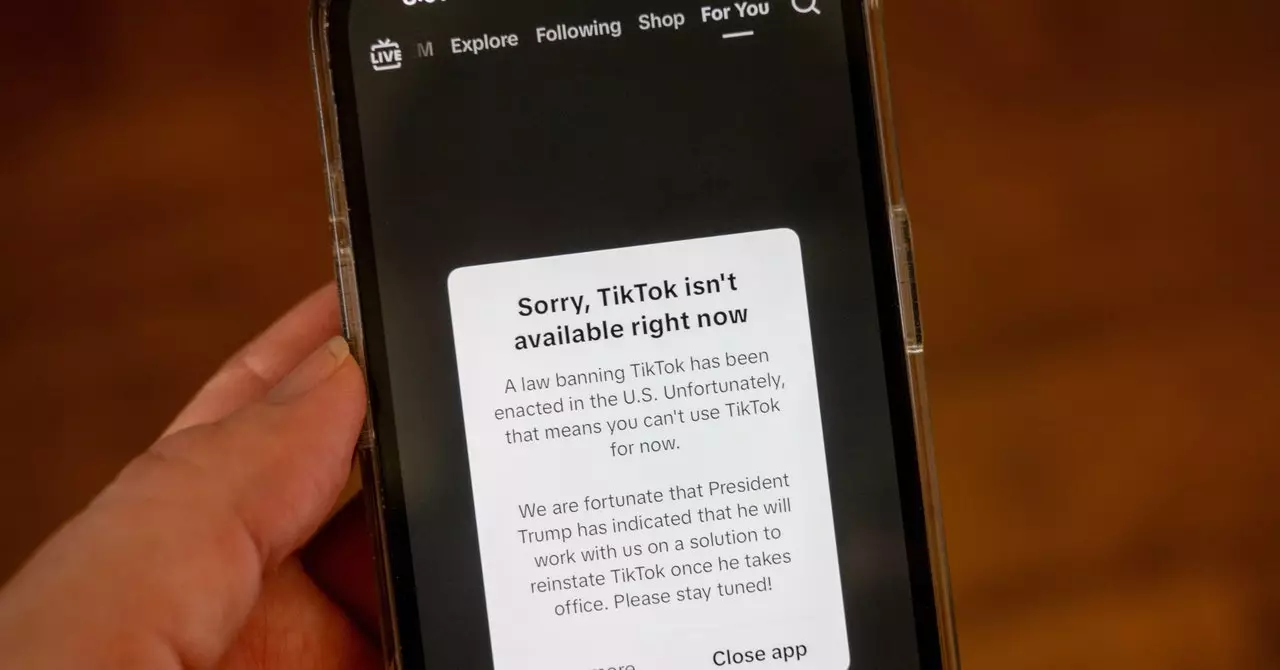The saga surrounding TikTok in the United States has taken an unexpected turn, highlighting the complexities of technology, politics, and constitutional rights. Having briefly gone offline, TikTok announced its return to service, largely credited to a reassurance from President-elect Donald Trump to its service providers, including tech giants like Apple, Google, and Oracle, about the app’s future. This development raises questions about the implications of political maneuvering on digital platforms, user rights, and national security.
TikTok, owned by the Chinese company ByteDance, has found itself at the center of a political storm. The app, known for its viral short videos, has faced increasing scrutiny from U.S. lawmakers, particularly concerning data privacy and national security. The tension culminated in legislation that required ByteDance to divest its U.S. operations or face a ban due to fears that user data could be accessed by the Chinese government. This legislative action reflects a broader narrative of escalating distrust between the U.S. and China, particularly in the technology sector.
As President Trump prepares to leave office, he appears eager to make a last-minute move that could preserve TikTok’s operations in the U.S. Reports surfaced that the app was removed from major app stores and that its servers were being shut down in anticipation of regulatory actions. The fate of TikTok now hangs in the balance, driven by political calculations that continue to shape the digital landscape.
TikTok’s revival, attributed to Trump’s assurances, raises profound questions about the effectiveness of regulatory measures in the tech industry. The statement from TikTok thanking Trump for his intervention underscores a reliance on political actors rather than established legal frameworks to ensure the app’s viability. While providing short-term clarity, this approach could lead to long-term instability, as it hinges on the whims of political figures rather than regulatory consistency.
Furthermore, Trump’s announcement to issue an executive order that would prolong the deadline for legislative enforcement not only aims to provide TikTok with a lifeline but also opens the door for a more profound examination of ownership and security. The mention of a potential joint venture where the U.S. could acquire a significant share involves discussions that blur the lines between financial interests and national security. The basic premise that U.S. involvement could enhance TikTok’s value complicates the narrative of safeguarding data privacy against foreign threats.
The return of TikTok relies on a delicate balance between national security and individual freedoms. As the app resumes operations, the debate about censorship and freedom of expression intensifies. TikTok’s significant user base, comprising over 170 million Americans and aiding 7 million small businesses, underscores its importance in digital communication and commerce. The outpouring of support for the app suggests a collective resistance against arbitrary censorship, a sentiment echoed in TikTok’s recognition of First Amendment rights.
However, the long-standing argument about where to draw the line between security and freedom is far from resolved. Users may enjoy the app’s restoration, but vigilance is necessary to ensure that such political bargaining does not set a dangerous precedent for how digital platforms are treated by government entities. Legislative moves that navigate around constitutional protections could lead to wider implications, potentially affecting how all tech companies operate under scrutiny in future crises.
As of now, TikTok, along with other ByteDance applications, is not fully restored in app stores, marking an uncertain and precarious future. Even as some users regain access to their accounts, varying functionality indicates ongoing instability. TikTok’s predicament is emblematic of the broader challenges that digital platforms face amid political strife and changing regulations.
Given these complexities, it seems that the resolution regarding TikTok’s future is still undetermined. Whether this momentary reprieve will evolve into a sustainable solution, or merely a placeholder before another round of requirements, remains to be seen. The intersection of technology, politics, and civil liberties will undoubtedly shape the narrative surrounding TikTok, underscoring the need for clarity and coherence in U.S. digital policy. In a world where technology outpaces legislation, stakeholders must work collaboratively to create an environment where innovation thrives alongside the imperative for security and freedom.

